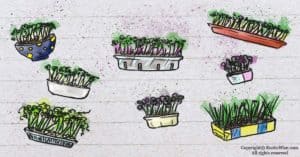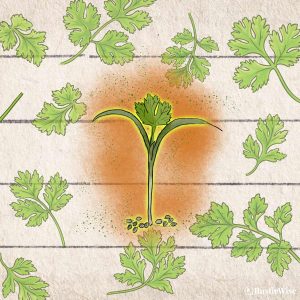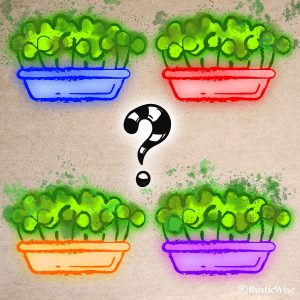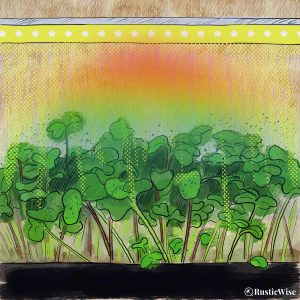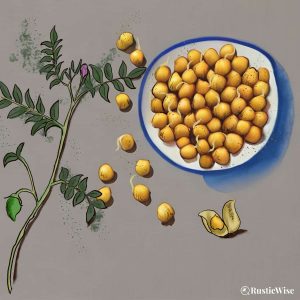How To Grow Kohlrabi Microgreens and Why You Should
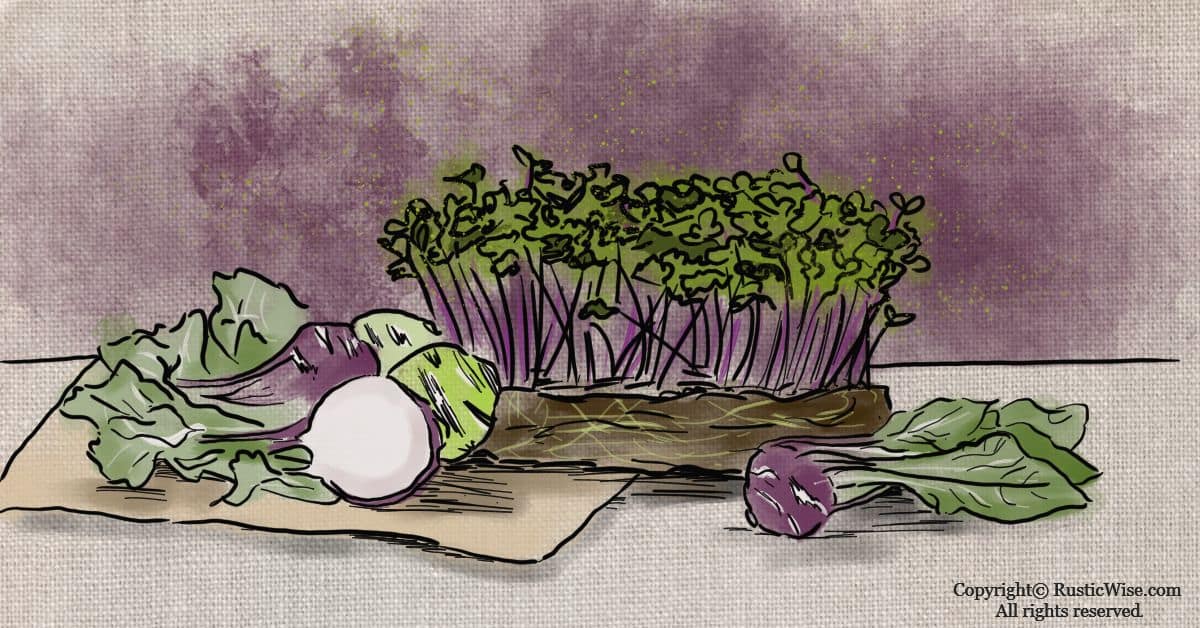
Kohlrabi is a vegetable that has gained popularity in recent years. Eaten raw or cooked, this veggie with a funky name is packed with vitamin C. An easy way to introduce kohlrabi into your diet is to grow kohlrabi microgreens at home. Microgreens are an easy-to-grow, nutrient-dense food that contains more nutrients than the same leaves from mature plants.
The tiny leaves of microgreens contain more nutrients than mature plants because they’re harvested at their peak. Each tiny leaf contains a concentrated amount of antioxidants, minerals, and vitamins.
Kohlrabi is a member of the Brassica genus which includes arugula, broccoli, cabbage, cauliflower, and radish. They are sometimes called German turnips or cabbage turnips. Kohlrabi has long, leafy, green stems that sprout out of bulbs that are white, purple, or light-green.
Kohlrabi microgreens can be eaten raw in salads or cooked into soups. They are also a great addition to sandwiches, wraps and other types of dishes that would benefit from fresh greens on top!
Let’s take a closer look at kohlrabi, its nutrition and health benefits. We’ll also show you how to grow your own kohlrabi microgreens at home.
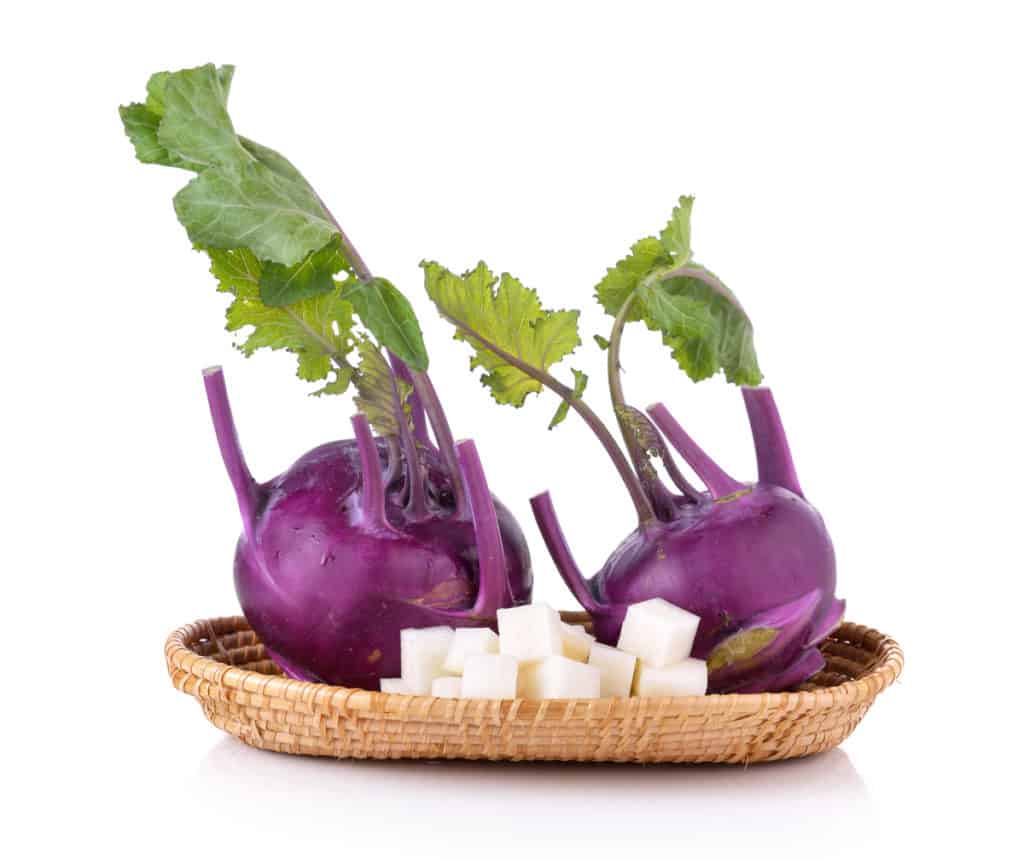
Credit: Yay Images
What does kohlrabi taste like?
With its interesting name, textured and often brightly-colored skin, it’s a shame that kohlrabi hasn’t been noticed more. Some people refer to kohlrabi as “the forgotten vegetable.” It is a member of the cabbage family and has been cultivated in Europe and Asia for centuries. The name kohlrabi comes from the German word “kohl” which means cabbage and “rabe” meaning turnip. It’s also known as the “poor man’s cabbage.” This may be because it looks like a turnip and tastes sort of like cabbage and broccoli, giving you multiple flavors in one veggie!
Let’s break down the taste and flavor profile of kohlrabi.
- Leaves: When young, they’re great raw in salads. Older leaves can be sautéed or steamed like other greens. Leaves taste a bit like turnip greens.
- Bulb: This is the main part of kohlrabi. The size of the bulb affects the taste: smaller bulbs are sweet and tender, while larger bulbs are tough and more bitter. Peel away the outer skin before using it raw in salads, or chopped and used in slaws. You can use the raw chopped bulb as a radish substitute. Raw kohlrabi is crunchy and slightly spicy!
- If boiling, or steaming, you can remove the skin afterwards. Cooked kohlrabi takes on more of a sweet and mild flavor.
- Stalks: Kohlrabi stalks are crunchy and taste like a cross between radish and cucumber.
- Kohlrabi microgreens: Purple kohlrabi microgreens are commonly grown. They are tender and mild-tasting with a slightly sweet hint of broccoli. Some describe it having a mild cabbage flavor.
How to use kohlrabi microgreens
Kohlrabi microgreens are mild and slightly sweet. Purple kohlrabi microgreens adds a colorful splash of color to any dish. You can add them to salads, sandwiches, or just munch on for a healthy snack!
With their mild and versatile flavor, kohlrabi microgreens go well with many dishes. Use them as a tasty salad base.
Add kohlrabi microgreens as a garnish atop omelettes, salads, soups, sandwiches, tacos, and wraps. It’s best to eat them raw, but you could cook the microgreens for about three minutes if desired!
Nutrition and health benefits of kohlrabi
Kohlrabi is high in minerals and vitamins. It’s a high-protein food that’s low in calories. Let’s take a look at one cup (135 grams) of raw kohlrabi:
| Kohlrabi, raw, 1 cup (135 grams) | |
|---|---|
| Calories | 36 calories |
| Protein | 2.3 grams |
| Carbs | 8.4 grams |
| Fiber | 4.9 grams |
| Vitamin C | 93% of the Daily Value |
| Vitamin B6 | 12% of the DV |
| Vitamin E | 4% of the DV |
| Potassium | 10% of the DV |
| Manganese | 8% of the DV |
| Thiamin | 6% of the DV |
| Magnesium | 6% of the DV |
| Phosphorous | 5% of the DV |
| Folate | 5% of the DV |
| Iron | 3% of the DV |
| Calcium | 2% of the DV |
Just one cup of raw kohlrabi has a whopping 93 percent of your daily requirements for vitamin C. Vitamin C is an all-round health booster that may help protect your immune system, fight cardiovascular disease, and even keep wrinkles at bay.
Kohlrabi is also a great source of dietary fiber which helps to regulate your digestive system, promotes overall gut health, and keeps blood sugar levels in check.
Kohlrabi contains plenty of vitamin B6 which promotes healthy production of red blood cells, and keeps your immune system healthy.
Another benefit of kohlrabi is its high protein content. It also contains significant amounts of calcium and iron.
If you’re growing purple kohlrabi microgreens, you’ll have the added benefit of a natural compound called anthocyanin which gives it its reddish-purple color. Anthocyanin helps promote a healthy heart and prevent heart disease. It’s a powerful antioxidant which combats free radicals and has anti-inflammatory properties.
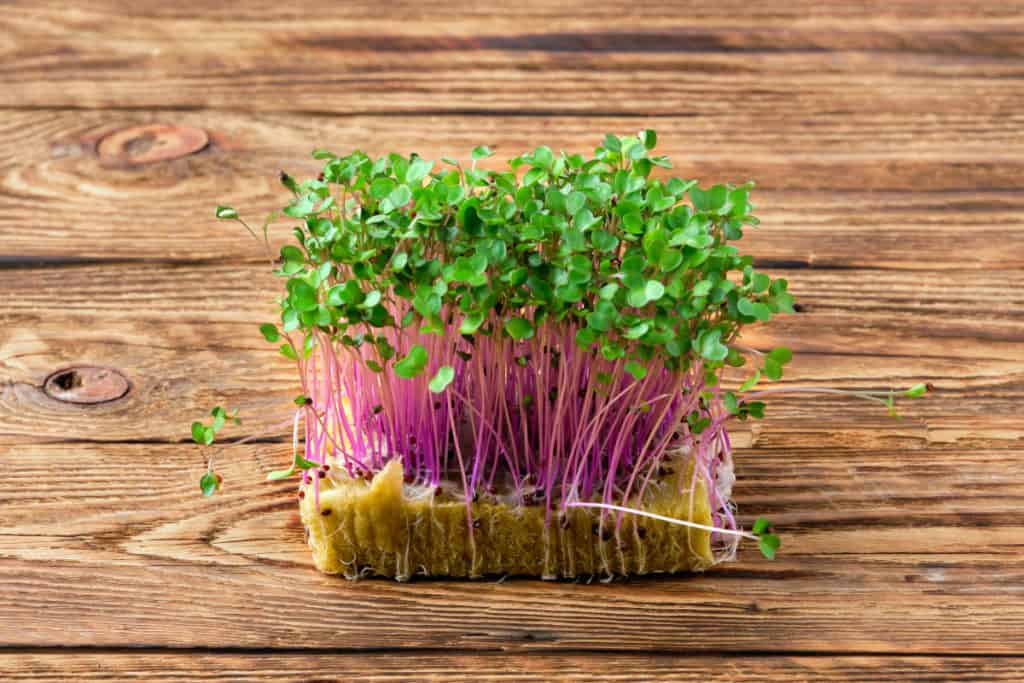
Credit: Deposit Photos
How to grow kohlrabi microgreens
Learning to grow kohlrabi microgreens is easy and simple. Let’s gather a few supplies.
Ready to harvest: 7–14 days
To grow kohlrabi microgreens, there’s no need to soak the seeds—just plant away!
You’ll need:
- A growing tray and cover. You can buy grow trays that come in a variety of sizes with 5 X 5 or 10 X 20 being the most popular. Or, you can use a shallow dish you have at home. Just remember to poke a few holes at the bottom for drainage.
- Growing medium. You can use organic potting mix, or a growing medium of your choice such as coconut coir, or a hemp mat.
- Kohlrabi microgreens seeds. Start with 1–2 teaspoons for a 5 X 5 tray, or 2–4 tablespoons for a 10 X 20 tray.
- A water mister
The following is intended as a general guideline only. Follow the instructions on your seed packet for best results.
- Prepare tray and growing medium. Fill your growing tray with 1–2 inches (2.5–5.1 centimeters) of organic planting medium. The planting medium should be lightly pressed down, but not too densely packed. Thoroughly moisten the medium with water. Ensure it’s moist, but not overly soggy.
- Plant the seeds. There’s no need to pre-soak these seeds. To sow the kohlrabi seeds, scatter evenly across the moist soil. Press them lightly into the soil with your hands, or a small piece of cardboard. Mist the seeds lightly with water.
- Cover and germinate. Place a cover over your kohlrabi seeds. This helps keep the moisture in and the light out during the germination stage. You should see signs of growth two or three days after planting. Place tray at room temperature in low-light. During germination continue to mist lightly once a day as needed. Remember to place the cover back on.
- Uncover and bring into the light. Once you see signs of steady growth and the kohlrabi has shed most of its hulls, it’s time to uncover and bring these beauties into the light! Place in a sunny place. Continue to mist once a day as needed. You can also try bottom watering to avoid damaging these fragile greens.
- Harvest and enjoy. When growing kohlrabi microgreens at home, you get to choose when to harvest. Typically this is sometime between days 7–14 when the greens are about 1–3 inches (2.5–7.6 centimeters) tall. You can grow until you see its “true leaves” fully open, or just before. Avoid watering up to 12 hours before harvest. Cut just above the medium, with scissors or a sharp knife.
Don’t panic if you see fuzzy little hairs appear on days 2–3. This is normal for kohlrabi microgreens, and many other Brassicas. These root hairs should disappear after watering. To learn more about this, we’ve written an article about the difference between mold vs. normal root hairs.
Microgreens store best when completely dry before refrigerated. If your kohlrabi microgreens are a bit wet, use a paper towel to dry by patting gently. Wrap loosely in a paper towel and place in a plastic produce bag, or a food-safe container in the fridge. Microgreens are good up to 1 week when properly stored (sometimes longer). But like most homegrown fresh produce, it’s best to eat within two or three days.
Related questions
Does kohlrabi give you gas?
Perhaps it’s not too surprising that kohlrabi, when eaten in large quantities, may give you gas. Kohlrabi is a cruciferous vegetable, a group of veggies of which broccoli, cauliflower, and cabbage belong to—veggies notorious for their (*ahem) gassy side effects. Kohlrabi contains raffinose, a sugar that’s difficult to digest.
Kohlrabi is a fiber-rich food. Foods high in fiber, such as kohlrabi, are more likely to cause gas in the intestines. When eaten raw, mature kohlrabi plant may cause gas. Try lightly cooking kohlrabi before eating to reduce its gassiness quotient.
The good news is that growing kohlrabi microgreens may make them slightly easier to digest. This is because the outer shell of sprouted seeds are broken down making them easier on the digestive system.

Author: Theresa Tesolin
Theresa is co-founder of RusticWise. She helps people unleash their inner DIY spirit by encouraging them to get dirty and make or grow something from scratch.



